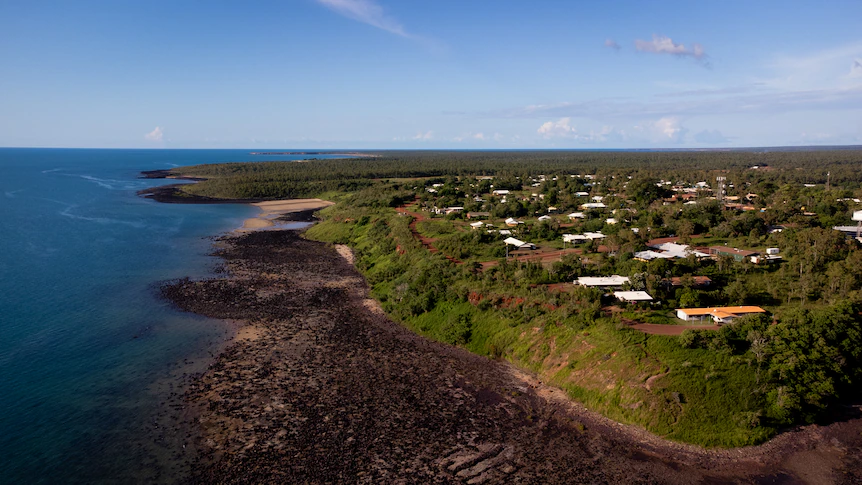By Tilda Colling
Copyright abc

Yolŋu elder and Aboriginal health worker George Gurruwiwi remembers the devastating impact of hepatitis B in his community of Galiwin’ku 20 years ago.
He recalls many deaths from chronic hepatitis B in the Elcho Island community, and constantly going to sorry business, or funerals.
“Especially here, Elcho, and other parts of the community, it’s avoidable death, a lot of death out here,” he said.
“We [were] doing ceremony after ceremony.”
At first glance, the latest hepatitis B data for the Northern Territory appears to paint a grim picture.
The figures provided by NT Health, which only cover the first six months of each year, show diagnoses almost tripled between 2022 and 2024.
But rather than being a cause for concern, healthcare workers say it’s actually a sign the Northern Territory is leading the nation in terms of care for the viral infection.
Mr Gurruwiwi says he has seen the change firsthand, having noticed fewer hepatitis B deaths in his community in recent years.
Since 2019, he has been a key partner with NT hepatitis B prevention program HEP B PAST, working to improve access to testing and treatment in Arnhem Land as both a community liaison and researcher.
“I mentor through a cultural perspective, through kinship,” he said.
“The difference is people understand.”
Falling morality rates
Seventy per cent of people who have hepatitis B in the Northern Territory are Indigenous, according to data from the World Health Organization (WHO) Collaborating Centre for Viral Hepatitis.
The territory is also home to an aggressive strain of hepatitis B called C4, which has only ever been diagnosed in Aboriginal people, and particularly Aboriginal people in the NT.
Hepatitis B can lead to severe liver degradation, and liver cancer in some cases if left untreated.
While non-chronic infections can be cured, most NT cases are chronic, and can be treated — though not cured — through regular check-ups to monitor liver function.
Anngie Everitt, a nurse who runs a hepatitis clinic in Darwin, said the main way hepatitis B was transmitted in the NT was from mother to child, during birth.
“It’s babies, it’s people that either contract from birth, or at a really young age, that are most likely to develop chronic hepatitis B, which requires lifelong treatment,” she said.
Mr Gurruwiwi said often people did not even realise they had the infection until they developed serious liver problems.
“Young people, especially, they don’t notice it in their bodies,” he said.
“A lot of them … I’ve seen it, they passed [away].”
But health workers say the tide is turning.
According to WHO research, since 2011, the Northern Territory has recorded the biggest decrease in hepatitis B mortality rates of any Australian state or territory.
Menzies School of Health Research Professor Jane Davies runs the HEP B PAST program in the Northern Territory, which has been nationally recognised as leading the nation in hepatitis B reduction.
Having started in 2018, the program visits remote Aboriginal communities to deliver a “one stop liver shop”, providing all the care needed for hepatitis B diagnosis and surveillance — like bloods and ultrasounds — in one day.
It also offers an app that translates healthcare information into 11 different Indigenous languages.
“You can imagine being told you have this chronic condition, that you could get liver cancer, that you need care every six months — that can be really scary, [and] that can be even scarier if it’s not in your first language,” Professor Davies said.
The HEP B PAST program has been recognised at a national level for its groundbreaking work, and has been recommended in national strategies as a successful model that could be rolled out in other jurisdictions to help eradicate hepatitis B in Australia.
Professor Davies said the improvement in the data indicated the Northern Territory had actually closed the gap in hepatitis care.
“Ten years ago we definitely were not meeting national strategy targets for people being diagnosed, for them being engaged in care and for them being on treatment … [but] very recently we’re able to say we’re achieving the national strategy targets,” she said.
“That means that we have 99 per cent of people diagnosed … and the national target is 80 per cent.
“We have 86 per cent of people engaged in care and the national target is 50 per cent, and we have 24 per cent of people on treatment and the national target is 20 per cent. So we’re now, for all of those targets, meeting them.”